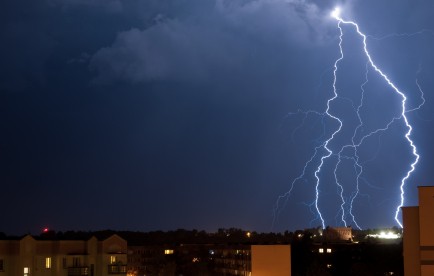


Every year around 250,000 lightning strikes occur over Belgium. In some cases, these electrical discharges between storm clouds and the earth can cause serious damage. Not only to buildings and structures, but also to people, equipment and devices.
As such, it is crucial that you know what to do in order to protect your property and appliances as much as possible.
Some points of advice and tips to follow if your home is not protected against lightning:
If you want to take it to the next level, you can protect your home, electrical installation and appliances with a lightning conductor and an overvoltage conductor.
A lighting conductor guides the lightning to the earth and protects your home against damage and fire caused by direct lightning strikes. They can be seen on towers, masts and tall buildings. They are reasonably expensive (sometimes as much as several thousand euros), they have to be installed by a specialist and they need regular maintenance.
A lightning strike at a distance can, however, cause indirect damage, as it creates shock waves and overvoltage which can spread:
In the event of an indirect lighting strike, a central overvoltage conductor fitted to the electric circuits will guide the electric overload to the earth and hence protect the entire installation. A conductor like this costs between EUR 500 and EUR 1,000 and must be installed by a specialist.
|
However, the central overvoltage conductor does let residual current through and this can harm electrical appliances susceptible to disruption, such as televisions, computers, sound installations and telephones. |
These appliances and all the related equipment can therefore also be protected separately by connecting them to a (multiple) power socket with overvoltage protection. But these sockets are not as effective against lightning strikes as the manufacturers claim... In any case, they are insufficient if they are used as the sole form of protection.
If you live in a city like Brussels, the risk that your home will be directly hit is, however, very small. Why is that?
Lightning always seeks the easiest way to reach the earth and preferably comes down via high structures (bell towers, skyscrapers, etc.), metal projections (beware of galvanised chimneys) and overhead lines.
In urban areas there are a lot of high buildings, but also very few isolated homes and surface cables. Consequently, there is much less risk of damage or fire caused by lightning in the town than in the countryside.
Subscribe to our newsletter and stay informed about energyfacts.